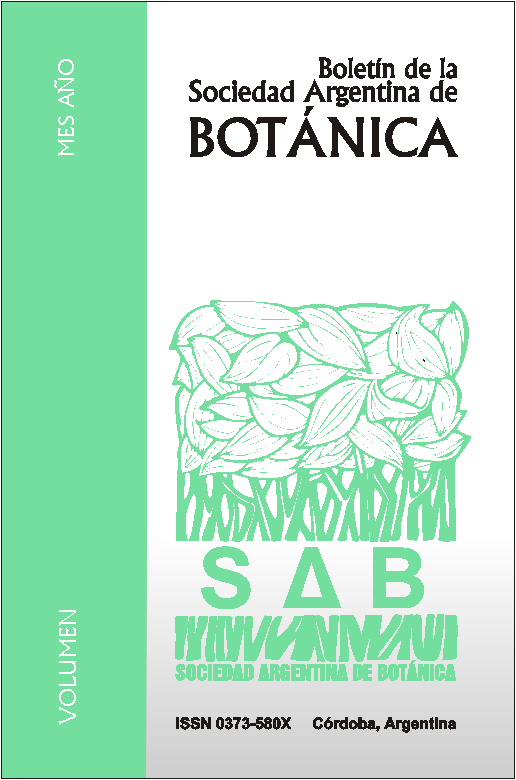Growth forms of Parietaria debilis (Urticaceae) and Veronica persica (Plantaginaceae)
DOI:
https://doi.org/10.31055/1851.2372.v49.n3.9467Keywords:
growth forms, sinflorescences, profileration, phyllotaxis, paraclades, branching systemAbstract
This work analyzes growth forms in V. persica and P. debilis, in order to identifytheir structural development under undisturbed conditions. Branching systems of shoots and their temporal and spatial variation, several structural and developmental features as well as growth direction and foliar sequence were studied in plants grown from seed in growth rooms and plants collected in the field.In both species studied, the main axis and the basal branches behave similarly, so they may be considered equivalent structures. In these axes, the zone that produces long branches has an opposite phyllotaxis, while the zone that bears reproductive structures has an alternate phyllotaxis. Along the main axis and the basal paracladia of V. persica, an inhibition zone is observed. Parietaria debilis lacks such a region and shows, instead, a continuous type of branching. As annual species, the whole branching systems forms a synflorescence. As regards the relationship between the growth form of these two species and their behavior as crop weeds, it may be stated that, being annual species, their high capability to produce flowering structures determines a significant rate of seed production.
Downloads
Downloads
Published
How to Cite
Issue
Section
License
Provides immediate and free OPEN ACCESS to its content under the principle of making research freely available to the public, which fosters a greater exchange of global knowledge, allowing authors to maintain their copyright without restrictions.
Material published in Bol. Soc. Argent. Bot. is distributed under a Creative Commons Attribution-NonCommercial-ShareAlike 4.0 International license.









